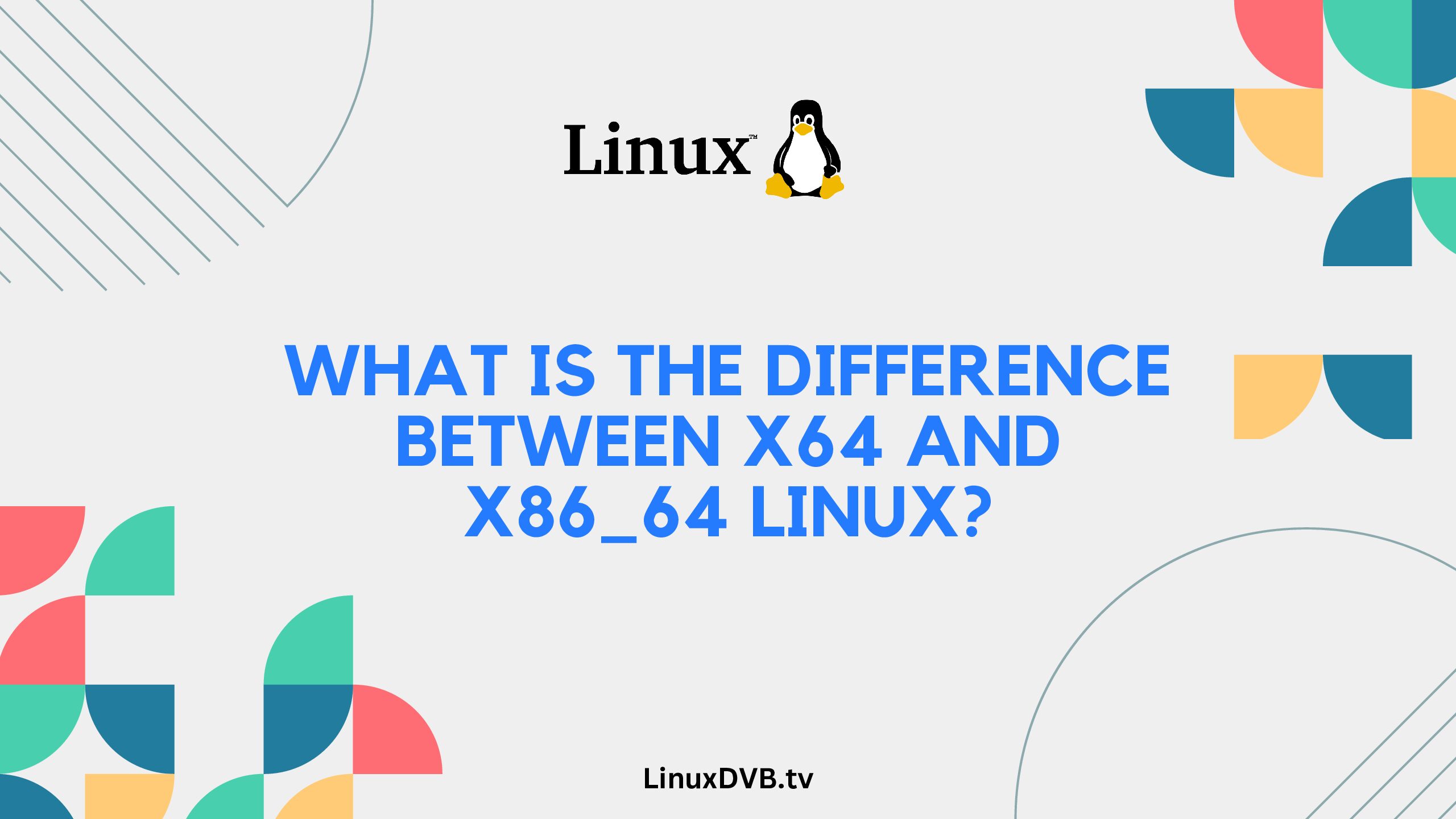Introduction
In the realm of operating systems, Linux offers an array of options tailored to different hardware architectures. Among these, x64 and x86_64 are two frequently encountered terms, both indicative of different types of Linux systems.
If you’re curious about the differences between x64 and x86_64 Linux, you’ve come to the right place. This article delves into the nuances, benefits, and applications of each, ensuring you gain a solid understanding of these architectures.
Table of Contents
What is the Difference between x64 and x86_64 Linux?
Both x64 and x86_64 refer to the same architecture, also known as the 64-bit architecture. This architecture represents a significant leap forward from its predecessor, the 32-bit x86 architecture. The main difference lies in the capabilities of these systems, especially in terms of memory addressing and processing power.
Advantages of x64 and x86_64 Linux
The shift from 32-bit to 64-bit architecture brings a host of advantages. These include:
- Increased Memory: 64-bit systems can address a much larger memory space than 32-bit counterparts. This results in improved performance for memory-intensive tasks and applications.
- Enhanced Performance: Due to larger registers and increased memory addressing, 64-bit systems can handle more data at once, resulting in faster execution of applications.
- Better Security: 64-bit architectures offer improved security features, including hardware-based Data Execution Prevention (DEP) and Kernel Patch Protection.
- Future-Proofing: As software development trends toward 64-bit compatibility, using a 64-bit OS ensures compatibility with the latest applications and technologies.
Use Cases for x64 and x86_64 Linux
The choice between x64 and x86_64 architectures depends on the intended usage:
- x64 Linux:
- Ideal for modern desktop and laptop systems.
- Offers compatibility with a wide range of software and drivers.
- Provides better multitasking and responsiveness for resource-intensive applications.
- x86_64 Linux:
- Suited for older hardware and specialized systems.
- Still relevant for specific embedded devices and legacy applications.
- Offers a lightweight option for systems with limited resources.
Compatibility Considerations
It’s important to note that while 64-bit systems provide substantial benefits, not all software may be compatible. Some older applications and drivers designed for 32-bit systems might not function correctly on 64-bit architectures. However, most modern software has been optimized for 64-bit environments.
FAQs
Is x64 the same as x86_64 Linux?
Yes, x64 and x86_64 Linux refer to the same 64-bit architecture. The terms are often used interchangeably to describe systems that utilize this architecture.
Can I run 32-bit applications on x64 Linux?
Yes, many 64-bit Linux distributions support running 32-bit applications through compatibility libraries. However, the reverse is not true; 32-bit systems cannot run 64-bit applications.
How do I determine if my system is running x64 Linux?
You can check your system’s architecture using the uname -m command. If the output is “x86_64,” you’re running a 64-bit Linux.
Are there any drawbacks to using x64 Linux?
While the benefits of x64 Linux are significant, it’s important to consider compatibility with older software and hardware. Some legacy applications or devices may not work seamlessly on 64-bit systems.
Can I upgrade from x86 to x64 Linux?
No, it’s not possible to directly upgrade an x86 (32-bit) Linux installation to x64 (64-bit). You would need to perform a clean installation of the 64-bit OS.
Is x64 Linux faster than x86?
In general, yes. The larger memory addressing and enhanced processing capabilities of x64 systems typically result in better performance, especially for resource-intensive tasks.
What is the difference between Linux x86 and Linux x86-64?
Linux x86 is 32-bit, Linux x86-64 is 64-bit, offering better performance and memory capabilities.
Should I use x86 or x64?
Consider x64 for better performance and access to more memory on modern systems.What is the difference between x64 and x86_64 Linux?
“x64” and “x86_64” are terms used interchangeably to refer to the same 64-bit architecture in Linux.What is x86 and x64 Linux?
“x86” refers to 32-bit architecture, while “x64” or “x86_64” refers to 64-bit architecture in Linux.What is Linux x86-64 bit?
Linux x86-64 is the 64-bit version of Linux designed to utilize modern hardware more effectively.What is x86-64 equivalent to?
“x86-64” is equivalent to “x64” and “AMD64,” denoting the 64-bit architecture.What is x86-64 in Linux?
“x86-64” in Linux refers to the 64-bit CPU architecture, providing enhanced performance and memory capacity.What is Linux x86-64?
Linux x86-64 is the 64-bit variant of the Linux operating system optimized for modern hardware.Is x64 and x86_64 the same?
Yes, “x64” and “x86_64” both refer to the same 64-bit architecture.What is the difference between x64 and x86 Linux?
“x64” is 64-bit, offering better performance and memory access, while “x86” is 32-bit and less capable on modern systems.Conclusion
In the world of Linux, the difference between x64 and x86_64 architecture lies in the power and capabilities they bring to the table. While x64 is the go-to choice for modern systems and applications, x86_64 offers a bridge to the past, catering to older hardware and specialized needs. As technology continues to evolve, understanding these architectures empowers you to make informed decisions about your Linux environment.

